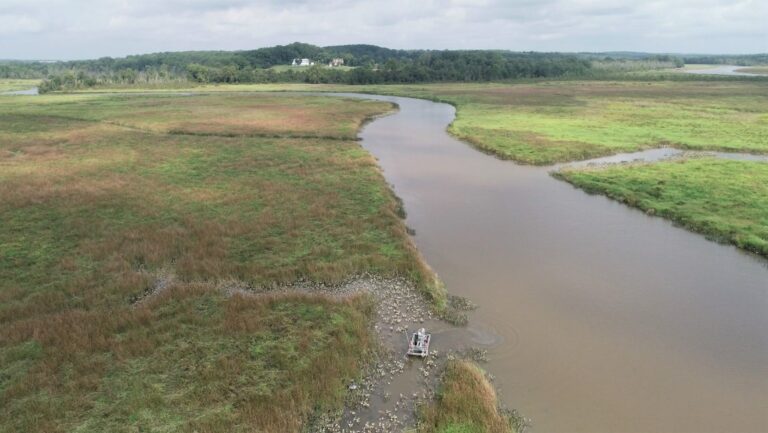
Photo courtesy of Maryland Department of Natural Resources.
Rising sea levels are negatively impacting coastal areas around the world. In Maryland, conservationists warn that important wetlands could eventually be submerged.
what’s happening?
On its official website, the Maryland Department of Natural Resources explains how it is working with George Mason University and the Nature Conservancy to identify areas that can contribute to coastal resiliency as new areas become overwhelmed by rising waters. I explained in detail what I did.
“As the impacts of sea level rise increase, it is more important than ever to protect land corridors through which wetlands can successfully migrate and continue to benefit coastal communities.” said Bob Allen, Director of Climate and Ecosystem Resilience. of the Columbia branch of the Nature Conservancy.
The project incorporates data from the Sea Level Impact Wetland Model (SLAMM), which estimates sea levels will rise 2 to 6.5 feet by 2100.
Why is this important?
The Maryland DNR explained that wetlands act as buffers against waves, provide coastal areas with a layer of protection against flooding and erosion, and improve water quality by filtering sediment.
It is also home to a variety of fish and wildlife, so the loss of these habitats can lead to a reduction in biodiversity, which is essential for the smooth functioning of ecosystems. Recreational and economic opportunities may also be reduced.
What can we do about this?
To protect wetlands, NOAA Fisheries recommends walking on marked trails, avoiding trash, choosing native plants for your garden, and using non-toxic products for lawn care. .
Meanwhile, according to the National Oceanic and Atmospheric Administration, the main cause of sea level rise is the melting of ice sheets due to rising ocean temperatures. Reducing global temperature rise will help restore balance to our oceans, and reducing our dependence on dirty fuels like coal, oil and gas is the best thing we can do.
Moving to an electric vehicle, solar panels, or heat pump can eliminate thousands of pounds of heat-trapping pollution and put money back in your wallet. However, if large-scale investments are not possible, simple actions such as unplugging energy vampires or switching to LED bulbs can be worthwhile and also provide cost-saving benefits.
Planning ahead can also reduce the negative impacts of sea level rise.
“With these deeper insights into the future impacts of sea level rise, land managers can proactively identify key areas for wildlife conservation while protecting coastal areas from storm impacts and nuisance flooding. We can,” DNR Conservation Resilience Planner Sarah Coleman said in the group’s press release. release.
Join our free newsletter cool news and cool tips it becomes easier Please eat it. While helping the planet.

